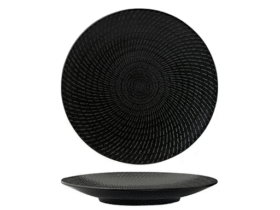Flowers are a universal language of beauty, emotion, and tradition. Across the globe, their presence at weddings transcends aesthetics, carrying rich meanings and cultural significance. Each bloom has its story, speaking of love, hope, or prosperity in ways that resonate with the traditions of various regions. Whether it’s a bride holding a delicate bouquet or a ceremonial arch adorned with blossoms, the choice of flowers often reflects the couple’s values and heritage. In many cultures, wedding flower arrangements play a profound role, adding layers of symbolism that make the event even more meaningful.
The Symbolism of Flowers in Eastern Traditions
In Eastern cultures, flowers are a part of the wedding ceremony and are considered virtues and blessings. In China, the givers of the flowers prefer red roses or peonies as they symbolize wealth, love, and honor. The color red, in particular, represents good luck. Therefore, these flowers are often used for weddings. Another famous flower is the lotus, which symbolizes purity and enlightenment and is common in traditional weddings or bridal bouquets.
In India, marigolds are used during weddings; the orange and yellow part of the flower is considered sacred and represents life. Marigolds are very popular; they are usually sewn in beautiful garlands or used in a decorative wedding mandap to bring blessings to the couple. Jasmine flowers are sweet-scented flowers, symbolizing purity and love. They are often used to decorate the bride’s hair accessories or even as accessories.
In Japan, cherry blossoms, or sakura, are used in the country’s wedding ceremonies. These flowers are like life, beautiful but short, and this is why such flowers are used to remind couples about the fact that every moment spent together is precious. These flowers are not only aesthetical additions to the pictures; they are symbolic, making them a part of the couple’s story.
Western Traditions and the Language of Flowers
In particular, flowers have always been an essential part of the wedding in Western cultures, and many customs are associated with the Victorian language of flowers. In this period, every bloom was given a particular meaning to express emotions and intentions; hence, the selection of flowers could influence the intended message. Interestingly, the rose, which is universally associated with love, is still the most widely used flower at Western weddings. They say a red rose symbolizes love and passion, and a white rose symbolizes purity and a new start.
Lilies are also a wedding favorite because they symbolize loyalty and the assurance of a chaste relationship. Calla lilies are especially popular for their great aesthetic appeal and symbolism of grandeur. According to some customs, daisies, associated with purity and fidelity, appear in the bride’s bouquet and look surprisingly harmoniously against the background of other, more sophisticated flowers.
Purple symbolizes devotion, and because lavender is gentle in color and smell, it has also gained acceptance. For brides who want something different, sunflowers can be chosen as they are associated with loyalty and long life so they will be a fresh addition to any wedding.
African and Middle Eastern Floral Traditions
Flowers in African weddings are used in addition to bright festivities with music, dancing, and colorful costumes. A protea is native to South Africa and represents courage and transformation. These vibrant flowers are used in different parts of the bride and groom’s reception, for instance, in the flower arrangements or reception area in celebrating the union.
Among the flowers, the most valued in Middle Eastern weddings include orange blossoms due to their fragrance and significance. Orange blossoms symbolize fertility and eternal love; they are incorporated into garlands, used to make headpieces, or incorporated into the bride’s dress. It has been practiced for many years and is still actively used in present-day weddings in Morocco and Lebanon.
Another fascinating flower tradition is the application of herbs for wreaths and bouquets, such as myrtle. Myrtle symbolizes love and loyalty and has been used in European and Middle Eastern royal weddings for generations, proving that people worldwide want happiness in marriage.
Conclusion
The message of wedding flowers symbolizes that love is a concept that people worldwide understand. From the Indian marigolds to the western roses and the African protea, every flower has a sign beyond cultures and generations. That is why it is possible to state that by embracing all these meanings, couples can write their own story into their ceremonies, reflecting their cultural and emotional experience.
















Leave a Reply